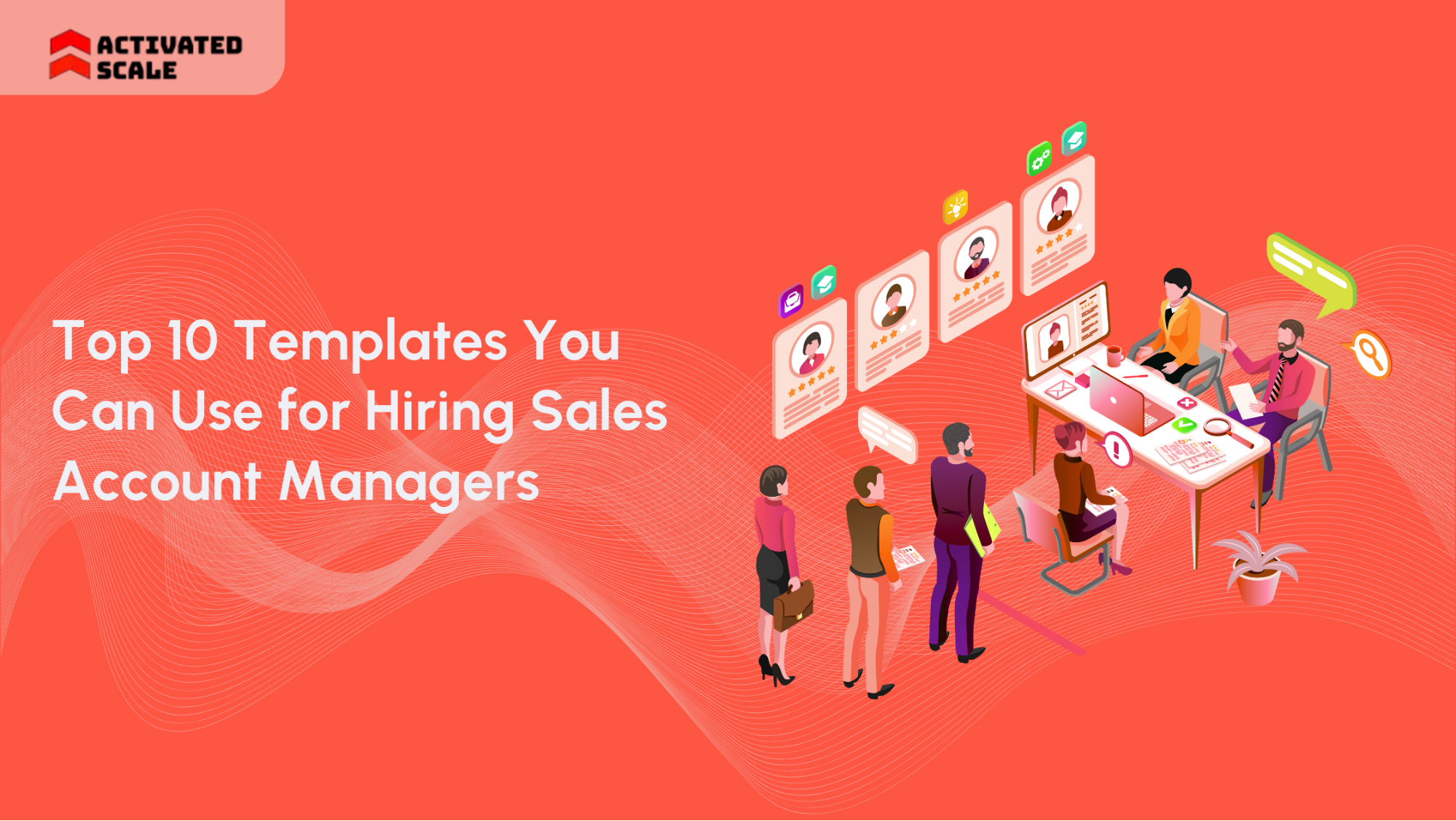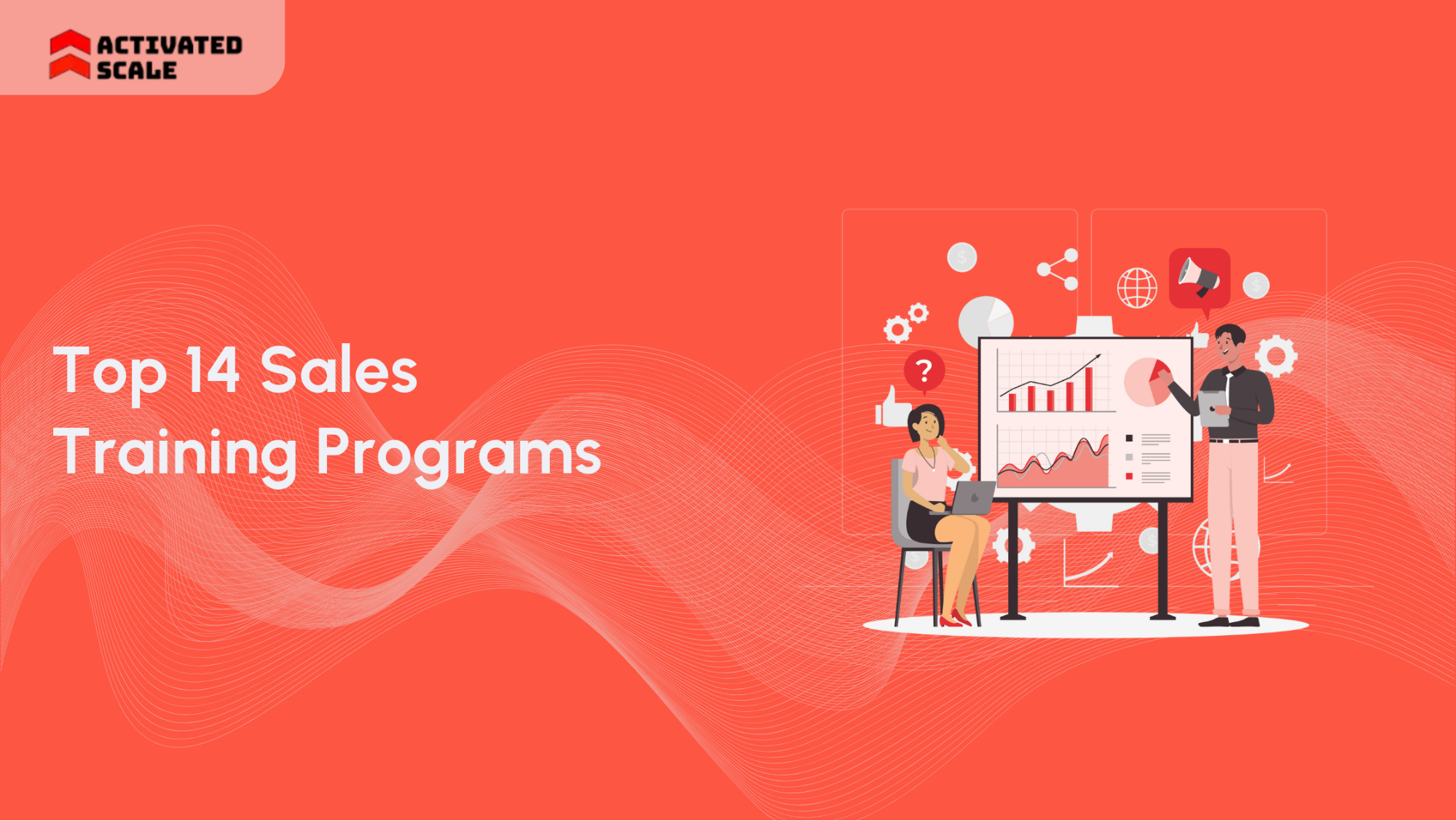Building a sales team that grows fast is the dream of every sales leader. However, it isn’t easy. Enterprise leaders are under constant pressure to scale quickly without sacrificing performance. A recent report by Salesforce found that sales teams spent 70% of their time on non-selling work.
The result? Poor productivity, missed quotas, and ultimately low revenue. It’s a harsh reality that many decision-makers in sales relate to. We understand how frustrating it is to invest in people, tools, and training only to see scattered outcomes.
That’s why we’re breaking this down into practical tips that match your growth goals and sales structure needs. In this blog, you’ll learn how to avoid the most common sales team scaling challenges and build a structure that delivers consistent results.
TL;DR
- Scaling before defining your sales process wastes headcount and leads to unpredictable results.
- When SDRs and AEs are at different stages of the funnel, performance improves across the board.
- Teams that block time for structured coaching consistently outperform those that don’t.
- Data is your most reliable manager. The shift from gut-based decisions to KPI-driven sales management is what separates chaotic growth from controlled scale.
- You don’t need to hire full-time to fill performance gaps. Fractional reps and contract-to-hire models give you speed, flexibility, and control without a long-term commitment.
What Does “Scaling Sales” Actually Mean?
Scaling sales is a process where your aim is to increase output without equally increasing overhead. A scalable team closes more deals faster, using fewer resources.
The goal is consistency and speed. You need reps who ramp fast, processes that repeat well, and tools that handle the grunt work. Scaling is important, but knowing when to scale your team is crucial to get the best result.
Also Read: How can you build a sales process at your startup?
When Are You Ready to Scale?
Hiring more reps before your foundation is ready creates waste and delays growth. Many teams jump into scaling without confirming if their system can handle more volume. A shocking fact is that 78% of successful companies with a great product-market fit fail due to premature scaling.
We understand you don’t want that for your team. So, we have created this checklist to evaluate your readiness:
- Do you have a clearly defined Ideal Customer Profile (ICP)?
- Is your lead pipeline steady and reliable?
- Is your sales process repeatable across reps?
- Are new hires ramping up quickly and consistently?
- Do your unit economics support profitable growth?
- Is your sales tech and data setup built to scale?
If you’re unsure of even one of these, take a step back. A shaky foundation won’t support a larger team; it’ll collapse under it.
If you’re unsure your sales org is ready to scale, don’t depend on guessing. At Activated Scale, you can start with contract-to-hire sales recruiting. Build structure, validate your process, and fill critical roles before committing long-term.
Once you go through the checklist to determine if you're ready to scale, you'll have a clearer picture of your next steps. Then, you'll need a step-by-step roadmap for scaling your team.
How to Build a Scalable Sales Team Quickly?
In the process of scaling your sales team, the good thing is that you don’t need to spend time hiring new candidates. However, a challenging aspect of scaling is building systems that make every sales rep more effective. This is more difficult than it sounds because employees resist changes most of the time.
So, how will you ensure scaling? Here are 10 proven tips that will help you with consistency across your sales organization:
- Define a Repeatable Sales Process
Only 20% of sales managers believe that deals consistently follow a repeatable process. This indicates a gap between intended and actual practices. A clear and repeatable sales process helps reps close deals faster and reduces confusion across your team. It maps out exactly what happens at each stage and aligns with how your buyers make decisions.
- Document each sales stage: prospect, qualify, pitch, handle objections, close, and follow up
- Align activities to buyer intent and decision journey
- Standardize messaging, timelines, and expected conversion rates
- Integrate it into onboarding and ongoing coaching
Expert Tip: Use tools like Highspot to visualize your sales process and align content with each step.
- Hire Based on Traits, Not Just Experience
Top-performing reps often win because of mindset, not resumes. The World Economic Forum's 2025 report identifies resilience, flexibility, and agility as essential skills. Most importantly, experience can be taught; character can’t.
- Define key behavioral traits like grit, adaptability, and coachability
- Build structured interviews to test for these traits (e.g., situational questions)
- Use trial tasks to evaluate real-world problem-solving
- Consider cultural fit, especially for remote or APAC teams
Expert Tip: Ask candidates to explain a deal they lost; how they responded reveals more than a resume.
- Specialized Sales Roles (Inbound vs Outbound)
When reps do everything, from chasing leads to closing, they lose focus and efficiency. Role specialization lets each team member go deeper into one stage of the funnel, improving performance and reducing ramp time.
- Split teams into SDRs (cold outbound) and MDRs (marketing-inbound leads)
- Define clear handoff rules between lead generation and closing
- Use territory or account segmentation to avoid rep overlap
Need specialized sales support without hiring full-time? Use Activated Scale’s Fractional Selling service to hire Fractional SDRs to fill your top-of-funnel pipeline. Let’s help you scale smarter faster.
Expert Tip: Don’t promote your best closers into prospecting roles; match strengths to role scope.
- Build a Strong Sales Tech Stack
Tech accelerates scale, but only when used right. Your stack should simplify workflows, reduce manual work, and help reps focus on selling. AI adoption in sales has increased significantly to 81% in 2025. So, the right tools help your team instead of overwhelming them.
- Audit current tools for overlap or underuse
- Invest in core platforms: CRM, sales engagement, enablement, and analytics
- Ensure tools integrate smoothly across your funnel
- Train reps not just to use tools but to use them consistently
Expert Tip: Fewer tools, fully adopted, outperform bloated stacks. Keep it lean and focused.
- Invest in Ongoing Coaching
Scaling without coaching leads to uneven results and high attrition. Replacing an employee can cost as much as 200% of their annual salary. Regular coaching improves rep performance and increases retention. It turns average reps into top performers.
- Block time for 1:1 coaching weekly or bi-weekly
- Review call recordings, email threads, and deal strategy live
- Set coaching goals tied to specific KPIs
- Make it collaborative, not corrective, and celebrate progress
Expert Tip: Coaching 2–3 hours per week per rep yields consistent quota improvement over time.
- Align Compensation With Scalable Outcomes
What you reward is what gets repeated. Compensation plans should reinforce the behaviors that lead to long-term success, not just short-term wins. A misaligned plan causes burnout or bad-fit selling.
- Review the compensation plans every quarter during growth
- Reward customer lifetime value or upsell-ready deals, not just closes
- Create team-wide incentives to encourage collaboration
Expert Tip: If reps are over-discounting, it’s usually a comp issue, not a pricing one.
- Let Data Drive Sales Strategy
Guesswork doesn’t scale. Tracking performance at every stage helps you coach smarter, allocate better, and fix issues before they impact revenue. Data analytics lets you manage with clarity, not intuition.
- Track time to ramp, lead conversion, and sales velocity
- Use A/B tests to refine scripts, emails, or offers
- Compare top performer behaviors to coach others effectively
Expert Tip: Focus on leading indicators (like pipeline coverage), not just results (closed-won deals).
- Create Buyer-Ready Content & Messaging
Scaling sales requires consistent, high-impact messaging across all reps. 64% of modern B2B buyers prefer digital channels over traditional ones. So, reps need the right content, customized to objections, industry, and persona, ready to use when it matters most.
- Build a library of objection-handling scripts, one-pagers, and case studies.
- Train reps on when and how to use each asset
- Align sales and marketing to co-create revenue-driven content
- Make assets searchable, relevant, and easily shareable
Expert Tip: Create a “sales starter kit” folder for every new rep with 10 battle-tested assets.
- Maintain Culture As You Scale
When teams grow fast, culture can break. Sustaining a shared mindset and values becomes your anchor. A significant 83% of employees value work-life balance in their current or future jobs, even surpassing salary considerations. So, focus on building retention, productivity, and alignment, especially in hybrid or distributed teams.
- Define your values and embed them in hiring and onboarding
- Celebrate wins publicly and offer feedback privately
- Recognize both individual performance and team collaboration
- Train frontline managers to coach through your company lens
Expert Tip: Culture is something that is absorbed through experience, not just taught. Reps tend to reflect the actions and behaviors of their leaders rather than simply following their words.
- Don’t Scale a Broken Process
Scaling a broken sales system only amplifies inefficiencies. Before hiring, automate, optimize, and stress-test your process. What works for 5 reps often breaks at 20 if it’s not structured.
- Audit your current sales flow: where are deals getting stuck?
- Fix low-converting stages before adding headcount
- Test changes on a small group before scaling across the org
- Continually optimize based on feedback and performance data
Expert Tip: Nail it, then scale it; don’t expand until your process consistently drives results.
If you don’t know where to start, hire U.S.-based sales talent with the help of Activated Scale’s Fractional Sales Leadership. With us, you can find that fractional sales leaders can adapt to scale their involvement up or down based on current business demands.
These are proven strategies, but you should also prepare yourself in case you encounter any challenges. Let us assure you, this is pretty usual. That’s why we have created a list of preventive steps in the next section.
Also Read: Tips for Hiring a Sales Director for Your Top-Performing Team
Common Mistakes to Avoid While Scaling Your Sales Team

Even high-growth companies run into trouble when they scale too quickly without fixing the basics. These common mistakes can slow your momentum, hurt rep performance, and lead to costly turnover. Avoiding them early will save you time, money, and missed revenue. Here’s what you need to be aware of:
- Hiring before your process is ready: Bringing in new reps without a structured, repeatable process leads to inconsistent performance.
- Lack of onboarding: Without proper onboarding, new hires take longer to ramp up and make more mistakes. Your managers also end up stuck in constant catch-up mode.
- Over-reliance on one or two reps: Depending heavily on a few star sellers makes your team vulnerable.
- Misalignment between sales and marketing: When these teams aren’t on the same page, reps chase poor-fit leads while marketing pushes the wrong message.
- Ignoring customer feedback: Dismissing objections, deal losses, or buyer hesitation means missing key insights. Scaling starts with listening then fixing what’s broken.
Now that you know how and when to approach these challenges, you're nearly there. What you need now is the right partner to handle these hurdles for you. That's where Activated Scale steps in.
How Activated Scale Can Help You Scale?

Scaling a sales team takes more than testing processes. It requires experienced leadership. That’s exactly what we at Activated Scale deliver through flexible, high-impact services built for fast-growing B2B companies. Our three major services are:
Quickly fill sales roles with vetted SDRs and AEs on a trial basis. You get to test performance and fit before making a full-time commitment, with zero long-term risk, all upside.
Plug performance-ready reps directly into your funnel. Our SDRs generate a qualified pipeline while our AEs handle demos and close deals, so you can scale without the overhead.
Need go-to-market clarity? Our Fractional VPs of Sales help you build your GTM strategy, design sales playbooks, launch partnership programs, and choose the right tools to scale efficiently.
From pre-Series A to market expansion, Activated Scale gives you the speed, flexibility, and expertise to grow without the growing pains. Book a Call now!
Final Thoughts
If you’re wondering how to build a scalable sales team, start by focusing on structure, not just speed. Scaling your sales team begins with clarity. You need to know who you’re selling to, what your reps should say, and how your process turns leads into revenue.
At Activated Scale, we make that possible. From contract-to-hire recruiting to fractional selling and proven sales leadership, we help you scale fast without hiring full-time.
If you’re serious about fixing the gaps in your sales engine, let’s build the team that gets you there. Contact Us at Activated Scale to start now!
FAQs
- What’s the difference between growing a sales team and scaling it?
Growing means adding more people as you need them. Scaling means building systems that let you increase revenue without increasing headcount at the same rate; think efficiency, not just volume. - When should I start scaling my sales team?
Start when you have a clear ICP and at least one or two reps consistently hitting quota. Scaling too early leads to wasted time, misfires, and high churn. - How do I know if my sales process is scalable?
A scalable process is documented, data-backed, and repeatable by any trained rep. If results depend on one top performer, your process isn’t scalable yet. - What are the best roles to hire first when scaling?
Start with SDRs or AEs, depending on where your pipeline is weakest. Consider fractional hires if you want traction without committing to full-time costs right away.
The Ultimate Guide to Hiring a Salesperson!
Get the step-by-step guide to hiring, onboarding, and ensuring success!
_edi.png)
.png)



